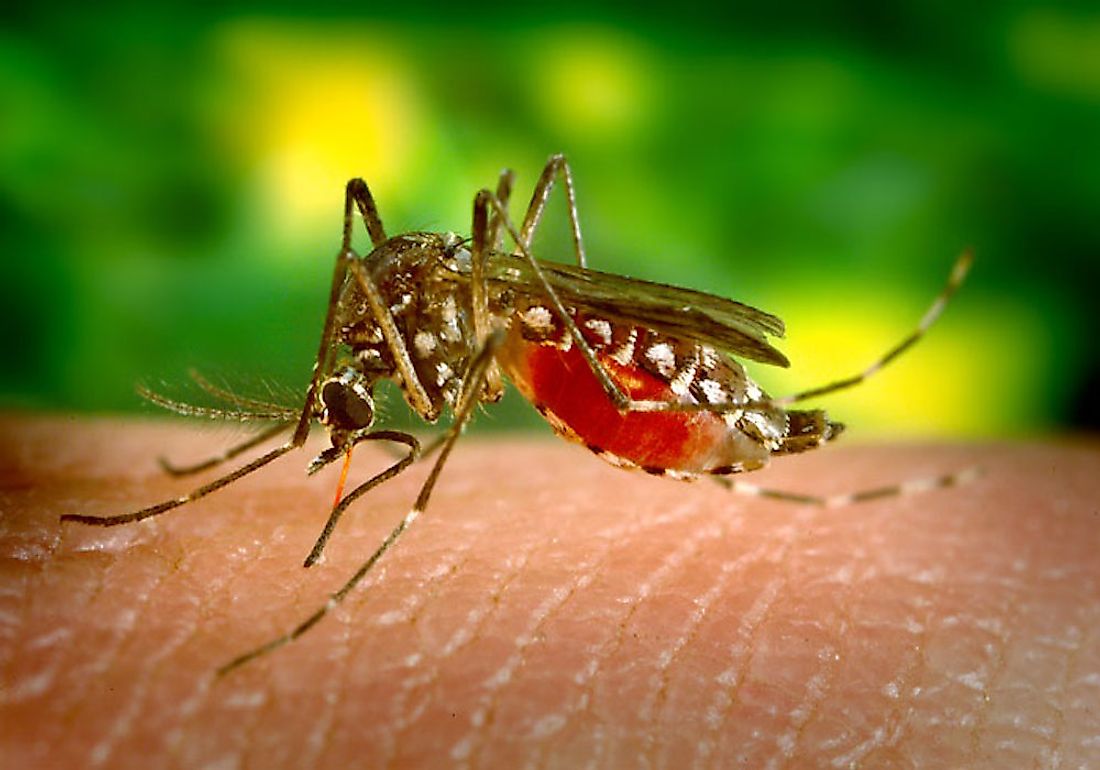Where Is The Yellow Fever Belt Of Africa And South America?

Yellow fever disease is caused by a yellow fever virus spread by an infected mosquito through a bite. It affects only humans and some species of primates. The symptoms of yellow fever include muscle pain, loss of appetite, and headache. The fever may keep recurring and the liver may also be damaged leading to a yellow skin and bleeding. The disease may be difficult to detect, especially in its early stage. Yellow fever is spread by a type of mosquito known as Aedes aegypti, who especially carries it in cities. The mosquito is found throughout the tropics and subtropics.
Where Is The Yellow Fever Belt?
Yellow fever is more pronounced in the tropic and subtropic countries of South America and Africa. "Yellow fever belt" is a name given to groups of countries within the tropics and subtropics, especially in Africa and South America where the realistic chances of contracting yellow fever tend to be quite high. Residents of these countries are at risk of contracting the disease due to the high presence of female mosquitoes who carry the disease-causing virus. Several countries, such as South Africa, require travelers to be vaccinated before they can be allowed into the country. In South Africa, travelers from the yellow fever belt are required to be vaccinated ten days before their travel as the vaccine can only be effective 10 days after it has been administered into the body. If one does not obey the 10-day rule they can be denied entry into South Africa by the immigration officers. Over 500 million people worldwide live in endemic areas with over 200,000 infections reported every year according to the World Health Organization (WHO).
African Yellow Fever Belt
More than half of African countries fall within the Yellow Fever Belt. The majority (over 90%) of the yellow fever infections occur in the African continent with large numbers of deaths and infections recorded in several African countries. The largest number of infection in the history of the disease was recorded in Togo in 2008. In 2016, there was a large breakout in Angola which spread to the neighboring countries before it was contained through a massive administration of the yellow fever vaccination. Five genotypes occur in Africa, especially in countries making the Yellow Fever Belt. The genotypes include the Central Africa, East Africa, West Africa I and II, and Angola. All the countries in Africa are part of the yellow fever belt except the North and South African countries. However, to enhance safety and precaution, it is advisable for anyone traveling to South Africa to be vaccinated irrespective of the country they are coming from.
South American Yellow Fever Belt
South American genotype I and II have been identified in the continent. According to some research, these genotypes may have been carried from West Africa. The genotypes were first introduced in Brazil around 1822, especially during the slave trade period. The tropical and sub-tropical climates of South America have encouraged the growth of yellow fever causing mosquitoes. The sub-tropical countries of South America including Brazil, Argentina, Colombia, Ecuador, Panama Peru, and Venezuela have provided a breeding ground for the disease-causing mosquitoes. In Brazil, there were over 400 confirmed cases of infection and 135 deaths in March 2017. To limit the exposure to the South American genotypes, South Africa requires those traveling from the continent to be vaccinated ten days before the travel date.







